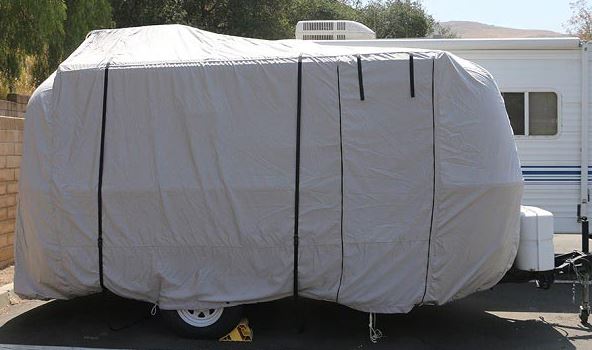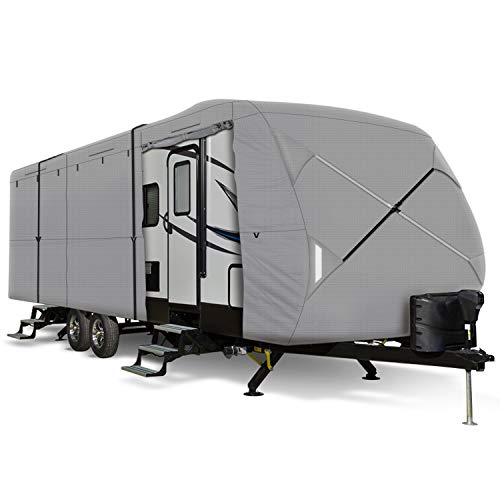
Introduction-
When it comes to RVs, travel trailers, and motorhomes, it’s no secret that they are a substantial investment, more like a house. Many surely surpass the cost of most autos and in order to safeguard your investment and to assure many years of dependable operation, RV owners need to maintain the inside and the outside of the RV. The easiest approach to safeguard both the inside and outside of an RV is to keep it in garage or rv covers.
Over time, the roof of the RV or camper will begin to show symptoms of ageing first due to continual exposure to the weather. The sun’s UV rays and ozone in the air begin to age all of the external finish but the roof is generally the first to exhibit symptoms of exposure. Paint will begin to fade and any rubber or vinyl on the unit’s outside will begin to fracture and break down. When feasible, it’s always ideal to shelter or cover the RV or motorhome.
When your trailer or RV isn’t in use, it has to be protected from the weather and debris. Because of its weight and, more precisely, freeze and thaw conditions, winter snow is one of the most crucial things to keep off your RV. If water pools in roof gaps and seams and then freezes, the pressure of the expanding water will damage sealants and cause them to loosen, allowing water to enter the RV.
In this kind of weather, choosing RV carports with a water-resistant roof layer is crucial. The UV rays from the sun are just as harmful in warmer climes, breaking down sealants over time and allowing water to leak through the RV’s roof. In this case, RV covers with optimum UV protection are the way to go. Keeping additional material off your RV, such as leaves, pine needles, and dirt, will help it stay cleaner and ready to use.
How to Choose a Perfect RV Cover?
Carports for RVs are helpful in a variety of situations. For example, they are often used to simply store the RV or camper while not in use. Owners of recreational vehicles are increasingly parking their cars at RV parks and on ‘vacationland’ they own, ready to use at any time. RV owners are using metal carports to cover their vehicles and give extra shelter and shade in semi-permanent sites. The RV carport or shelter size may be determined after you know how it will be utilized.

Type of RV
There are various things and factors to consider before committing to a travel trailer cover. First, there’s a wide choice of coverings available, from design to pricing, that might match your requirements.
Features
RV covers function as a protective barrier between your RV and any harmful elements. However, some may have extra weatherproofing if you live in a particularly severe climate or air vents to keep moisture from building up under the cover or keep high winds from ripping the body off. Covers with zippered door panels are also available, making it easier to access the inside during storage.
Material
Polyester (best for hot, dry regions), polyethylene (best for wet climates), polypropylene (best for humid climates), or solution-dyed acrylic (best for humid climates) are the most common RV coverings (good protection against both sun and rain). Choose one appropriate for the environment in which you will store your RV.
RV Should be Waterproof
You’ll want to double-check that it’s watertight and that the seams are well-constructed. Water will often begin to leak through at this time.
RV Should Have Reinforced Corners
There is a lot of stuff on top of the RV, including sharp edges. So, we’ve worked out where the cover’s most susceptible points are throughout the years. We also sort of encourage them.
Conclusion
RV owners have already invested a significant amount of money in their RV, travel trailer, or motorhome, so it makes sense to protect it in some way to ensure years of service, protect the finish, and increase the resale value. Many RV owners have said that metal RV carports are the best and most cost-effective long-term storage solution for their RV or motorhome if they have the space on their property.
People don’t have to deal with the hassle and chaffing of fabric or other types of RV covers, and they don’t have to pay for rented space. So, choosing to keep an RV sheltered is a wise decision. So the method you choose entirely depends on you.
